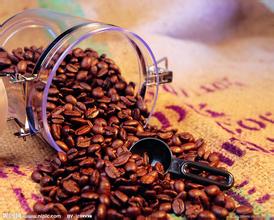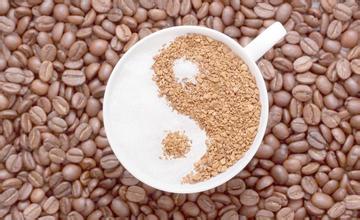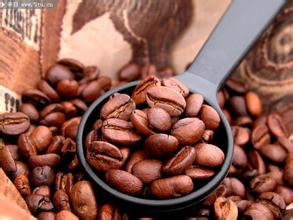What is the amount of coffee powder extracted from coffee-coffee powder consumption in siphon pot
What is the amount of coffee powder extracted from coffee-coffee powder consumption in siphon pot
In fact, pre-soaking and steaming are roughly the same, that is, wetting the surface of coffee, making coffee pressed powder expand rapidly, making pressed powder form a good filter layer. In theory, the expansion space of coffee powder is about 1-2mm. The expansion makes a uniform bubble gap between coffee powder particles, so that water passes through quickly and evenly. The function of prepreg is to expand between these coffee particles, forming a uniform size gap, so that the aroma of coffee can be released as much as possible.
Before deciding on the grinding degree of coffee beans, baristas will first look at the color and oil production of cooked beans. The lighter the roasted coffee, the more complete and hard the texture is, and the more difficult it is to extract. It is advisable to grind it slightly, but not too fine, so as not to highlight the sharp and sour taste. The deeper the roasting degree of coffee, the deeper the damage to the texture, the easier to extract, it is appropriate to grind a little coarsely, deep roasting and grinding too fine will be bitter. Therefore, the degree of grinding of deep-roasted coffee is generally thicker than that of shallow roasted beans.
The thickness can control the bitterness
Roughness is a good way to control bitterness, because the finer the grinding, the higher the extraction rate, the easier it is to extract high molecular weight bitter substances such as chlorogenic acid, quinic acid, caffeine and carbides. On the contrary, if the grinding is too rough, the lower the extraction rate is, the more difficult it is to extract the astringent bitter substance with high molecular weight, but the sweet taste with middle molecular weight may remain in the coffee grounds because of insufficient extraction, which is a waste. Therefore, baristas should pay attention to whether the thickness of the powder is normal every day. Too thick or too fine will cause abnormal extraction and affect the flavor of coffee.
The degree of grinding of all kinds of bubble cooking methods, from coarse to fine, in the following order:
French filter kettle (rough grinding), electric drip pot (medium), hand punch, siphon pot, desktop smart filter cup (medium), mocha pot (medium), espresso (fine), Turkish coffee (very fine).
According to the European Fine Coffee Association (SCAE-Speciality Coffee Association of Europe), the rough grinding of the French filter pot indicates that each bean is crushed into 100,300 particles, each about 0.7mm in diameter. In the medium rough grinding of the electric filter pot, each bean is ground into 500 grains of 800 particles, with a diameter of about 0.5 mm. Moderately ground by hand and siphon, each bean is ground into 1000 to 3000 particles with a diameter of about 0.35. The fine grinding of espresso in which each bean is ground into 3500 particles with a diameter of about 0.05mm. Turkish coffee is ground into a flour-like ultra-fine powder, and each bean is ground into 15000mm 35000 particles.

Important Notice :
前街咖啡 FrontStreet Coffee has moved to new addredd:
FrontStreet Coffee Address: 315,Donghua East Road,GuangZhou
Tel:020 38364473
- Prev

World-famous coffee plantation producing area brand taste flavor description grinding scale treatment quality introduction
World famous coffee estate production area brand taste flavor description grinding scale treatment method quality introduction SGL farm coffee beans in the industry is also a high reputation in the south of Costa Rica's capital San Jose called Dalazhu place; logo Dalazhu Costa Rica coffee is the product of this region Bill in took over the family coffee plantation in 6,
- Next

The definition of Fine Coffee Wave an introduction to the Historical Origin of the three Coffee waves in the World
Coffee history tide fine coffee has a strict grading system. Generally, raw beans are preserved in parchment coffee beans in the form of endocarp after processing, and the endocarp is removed before export. Go through a strict grading process to ensure the uniformity of quality. And it is very important to preserve the protection during transportation, such as for temperature.
Related
- What brand of black coffee is the most authentic and delicious? what are the characteristics of the flavor of the authentic Rose Summer Black Coffee?
- Introduction to the principle and characteristics of the correct use of mocha pot A detailed course of mocha pot brewing coffee is described in five steps.
- Which is better, decaf or regular coffee? how is decaf made?
- How much is a bag of four cat coffee?
- How about four Cat Coffee or Nestle Coffee? why is it a cheap scam?
- Which is better, Yunnan four Cats Coffee or Nestle Coffee? How about cat coffee? is it a fake scam? why is it so cheap?
- How about Cat Coffee? what grade is a hoax? which instant coffee tastes better, four Cat Coffee, Nestle Coffee or G7 coffee?
- Process flow chart of coffee making-Starbucks coffee making process what coffee tastes good at Starbucks
- The top ten best coffee beans in the world Rose summer coffee or Tanzanian coffee tastes good
- Yunnan four cat coffee is good to drink?_four cat coffee is a big brand? four cat blue mountain coffee is fake?

